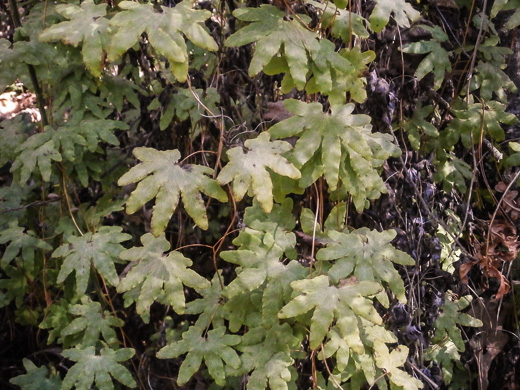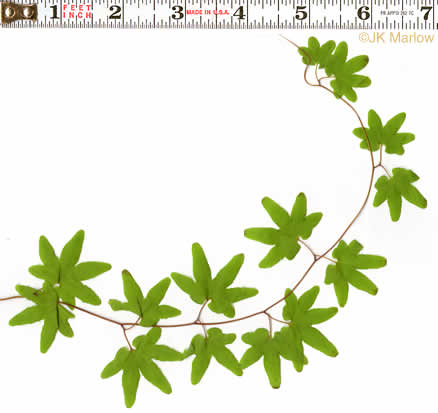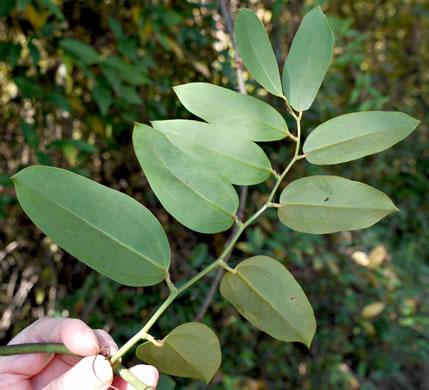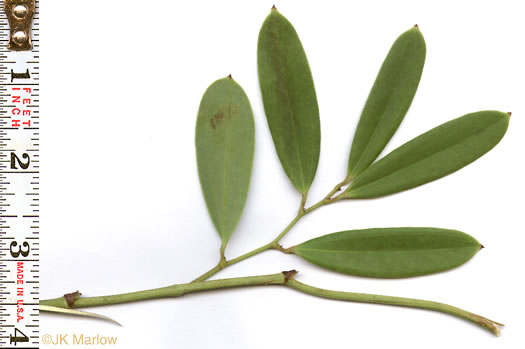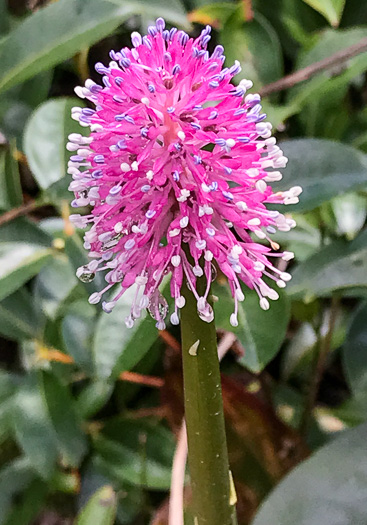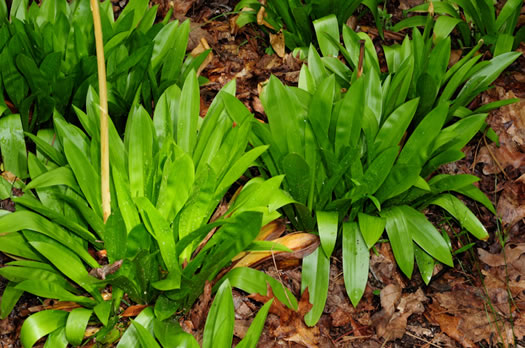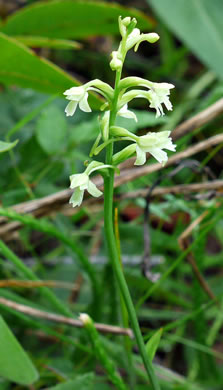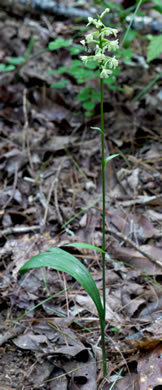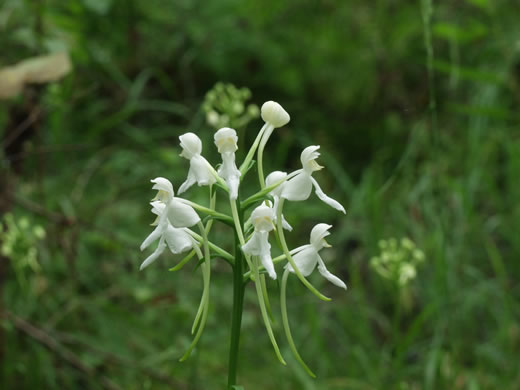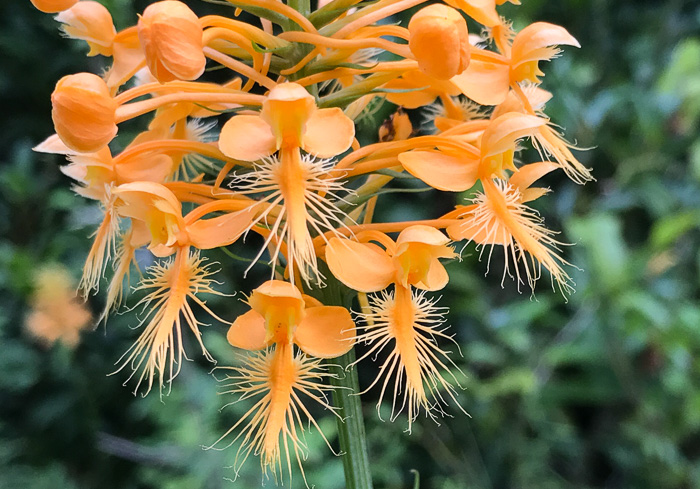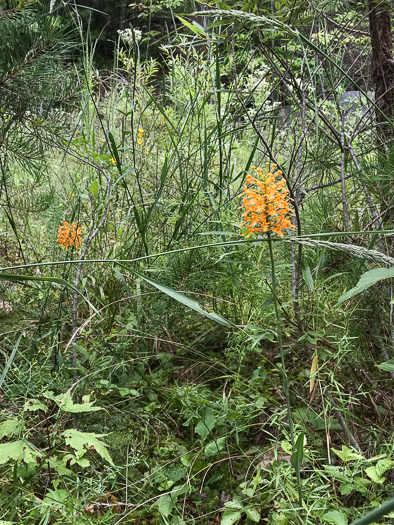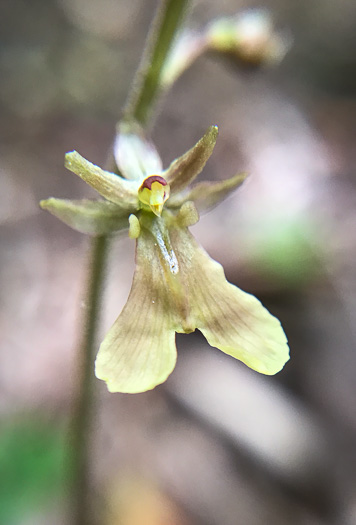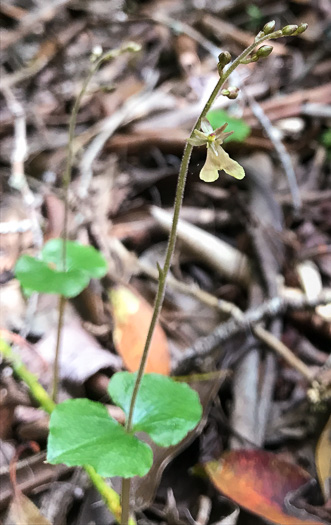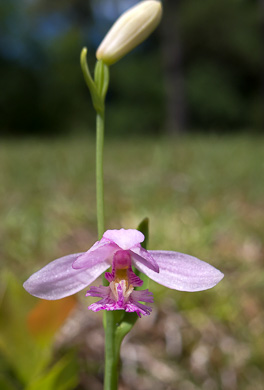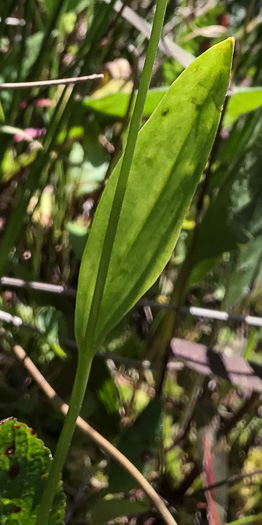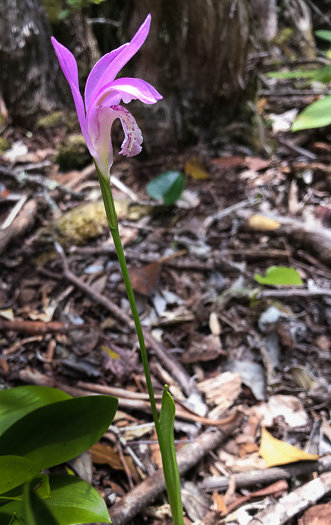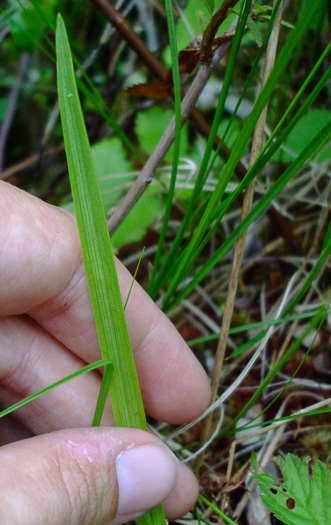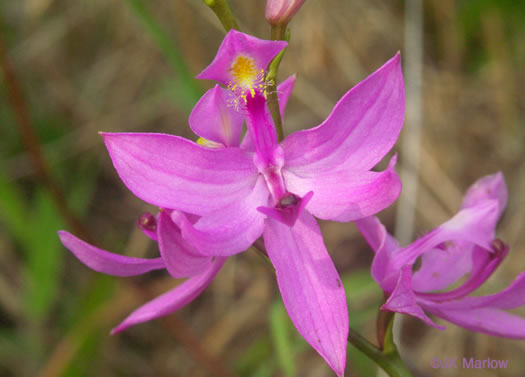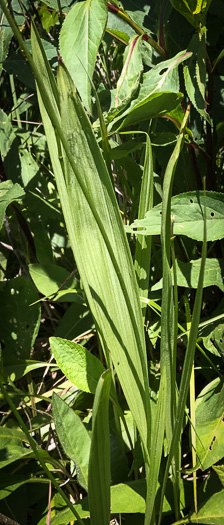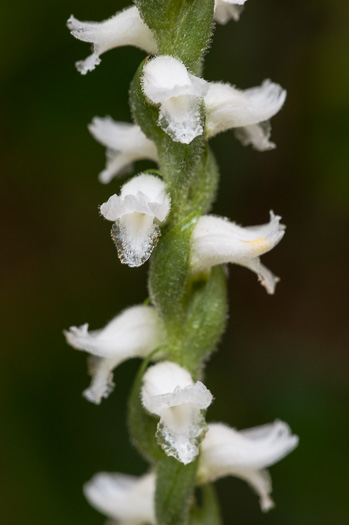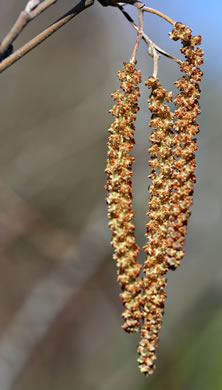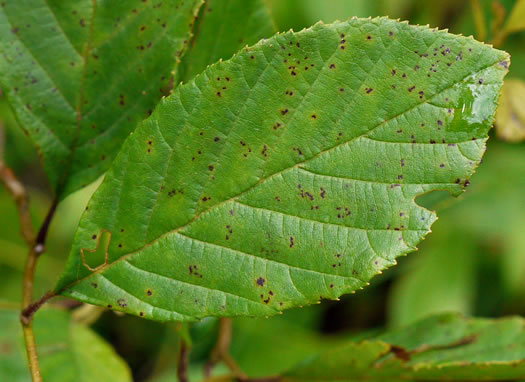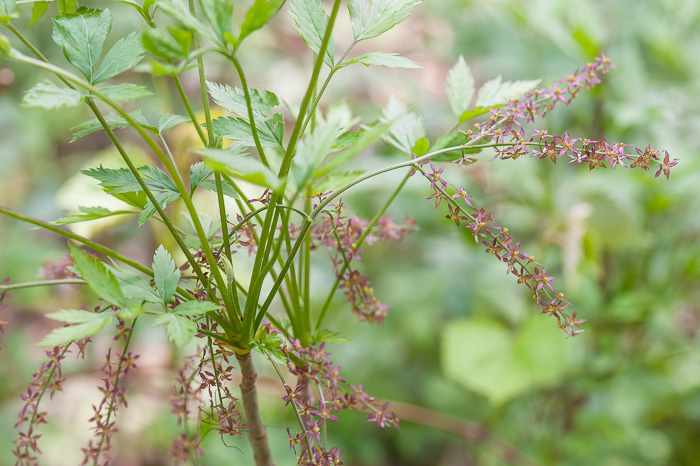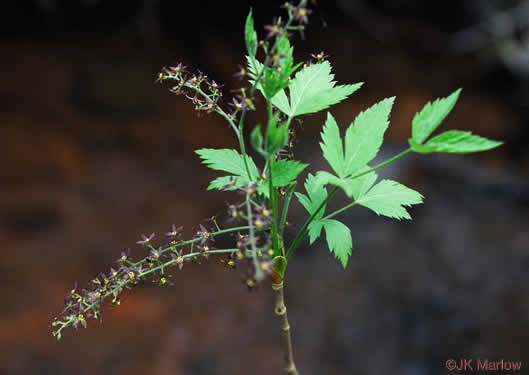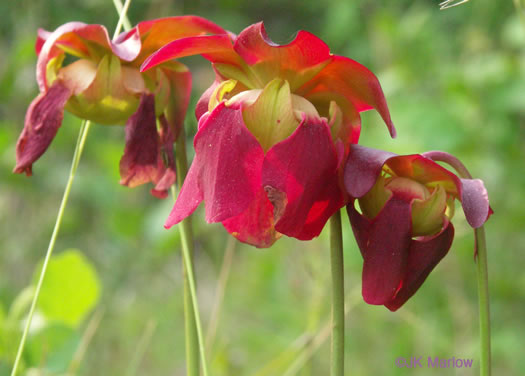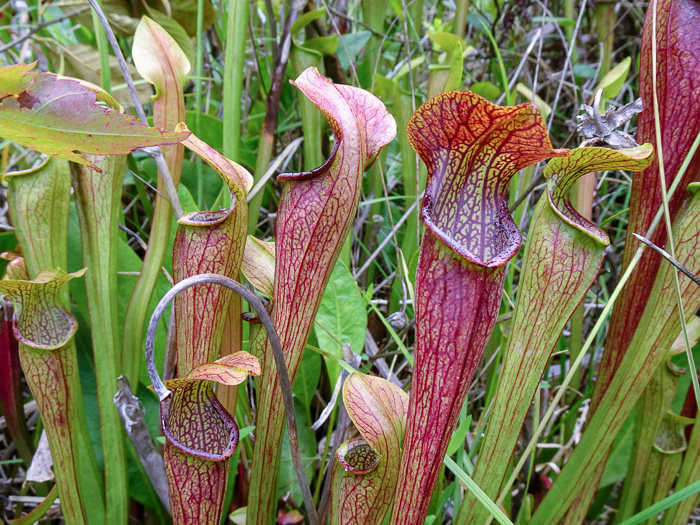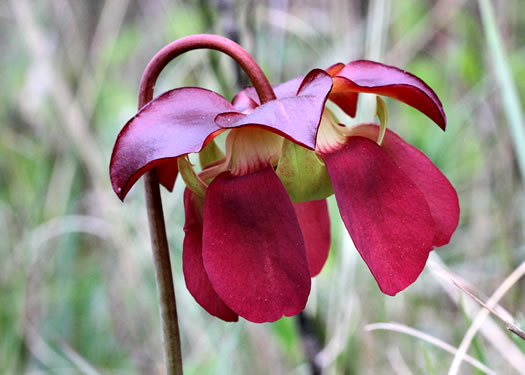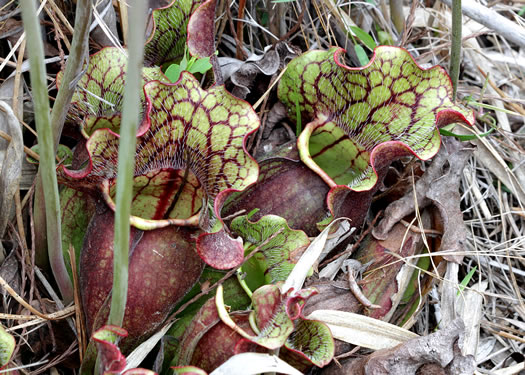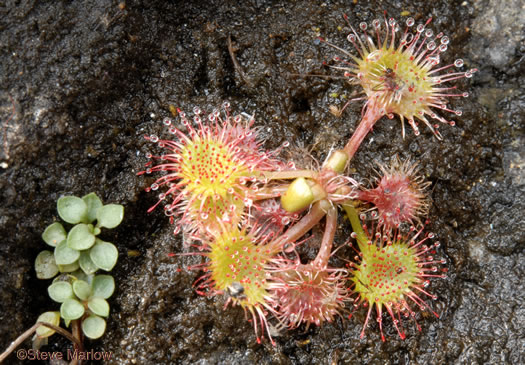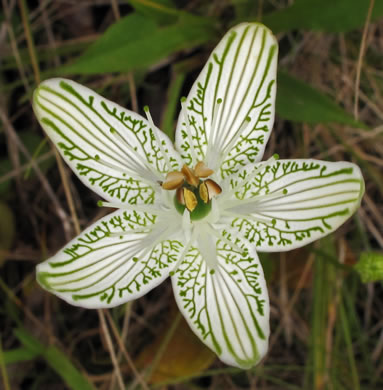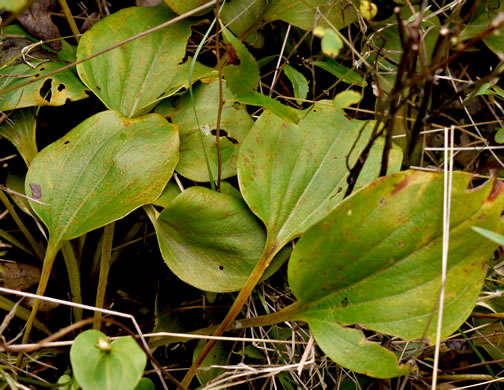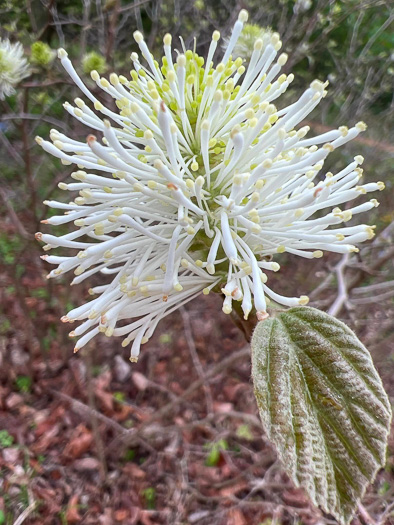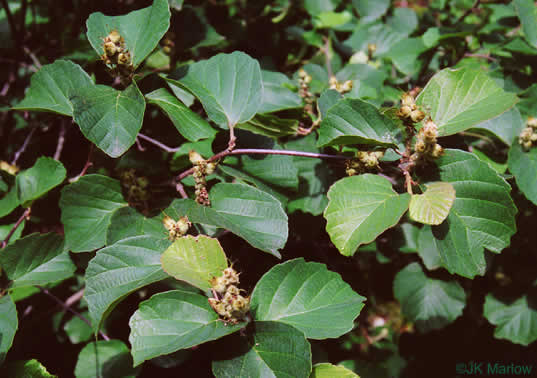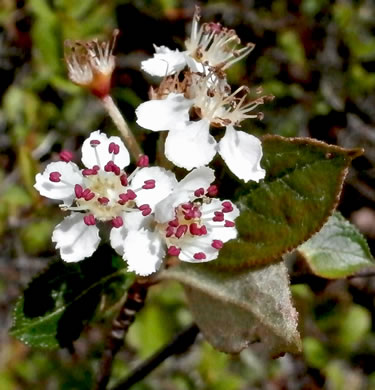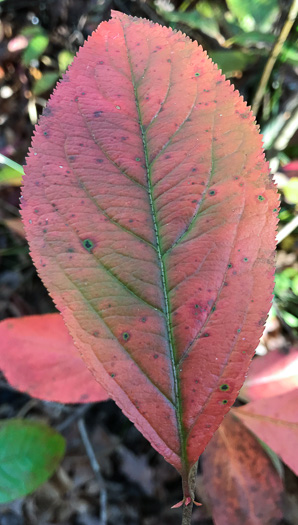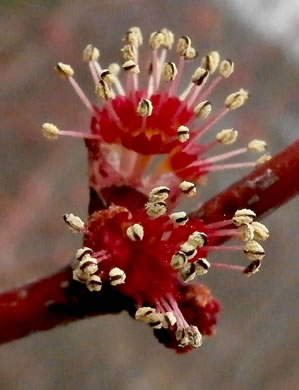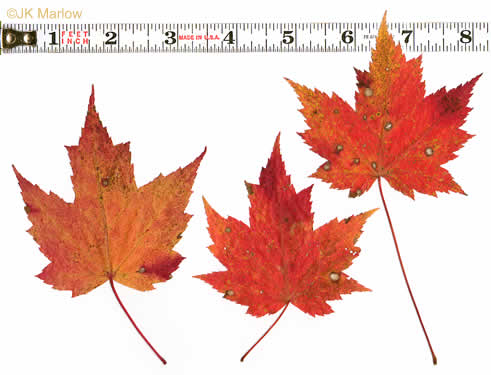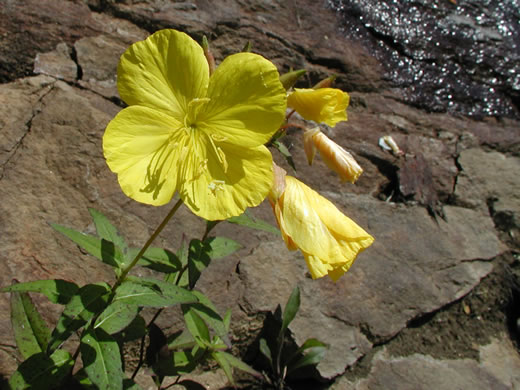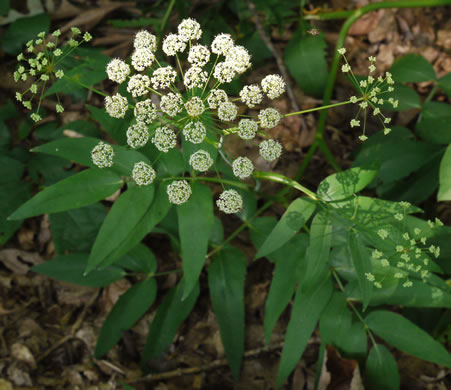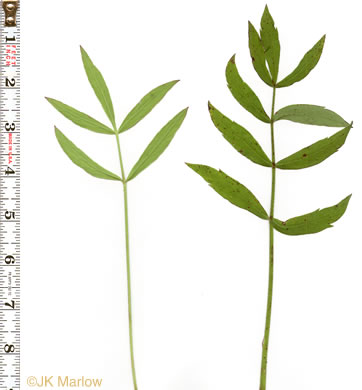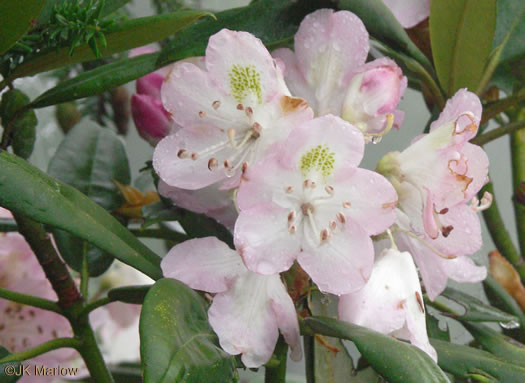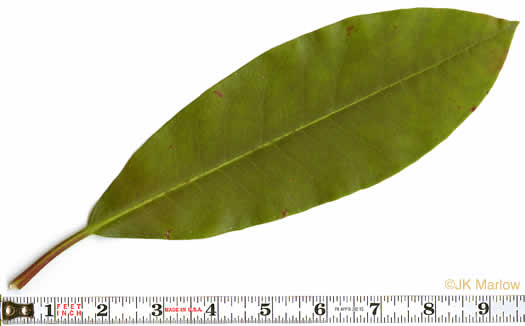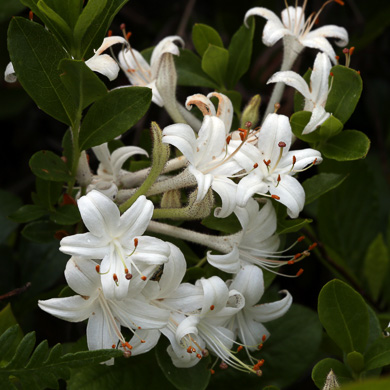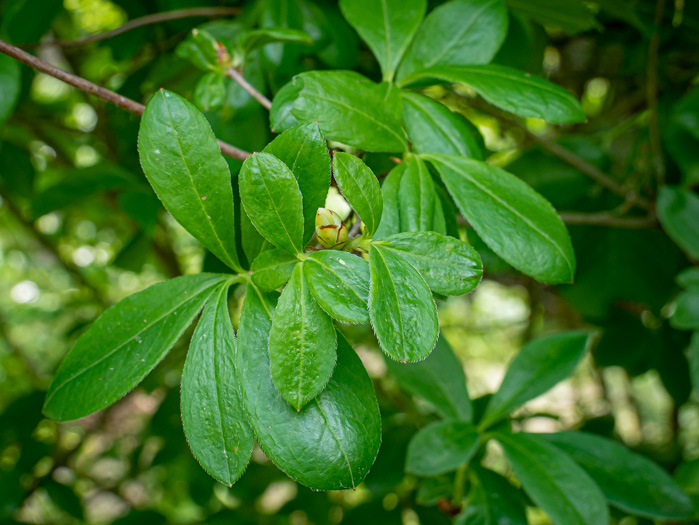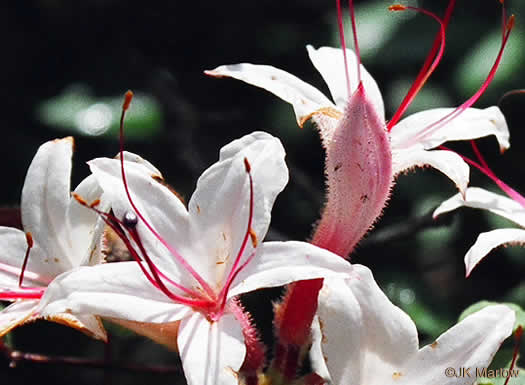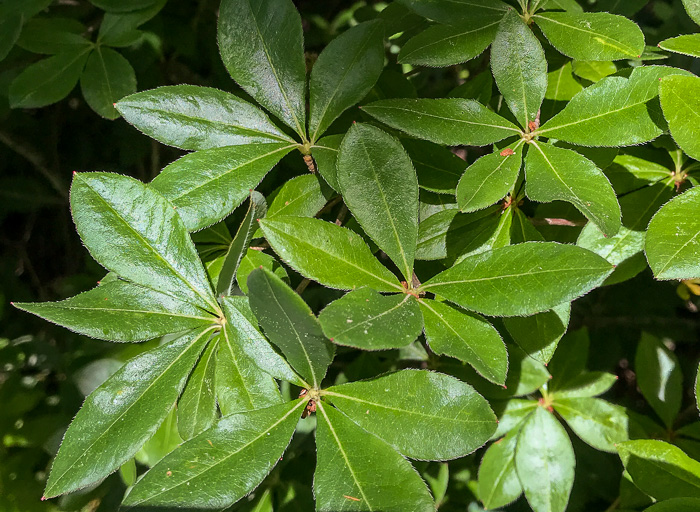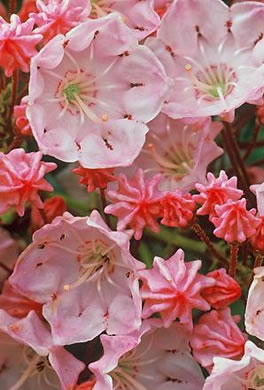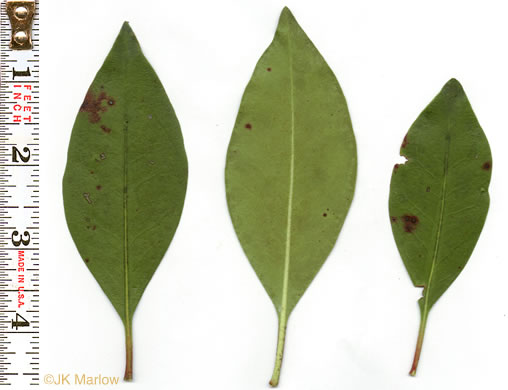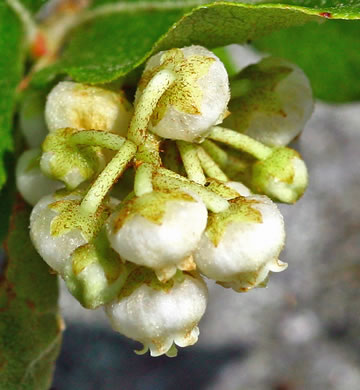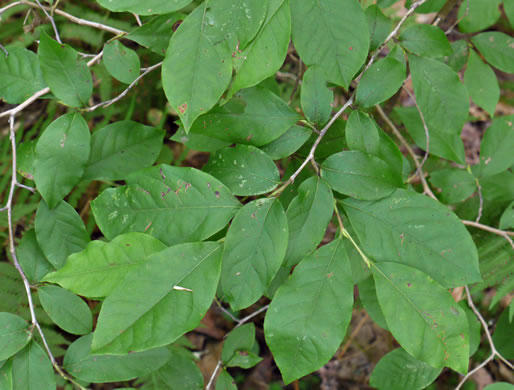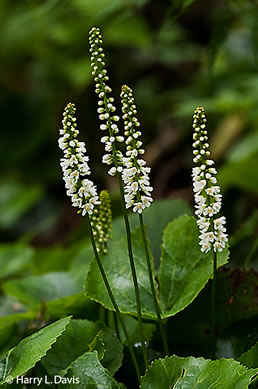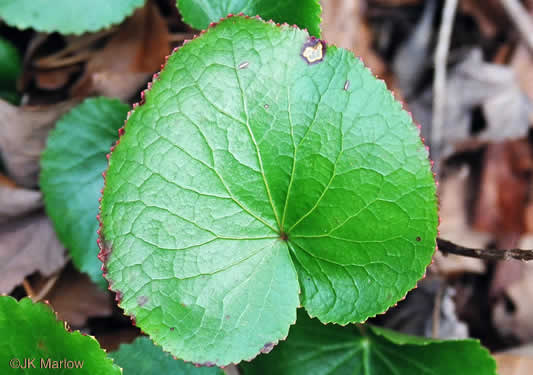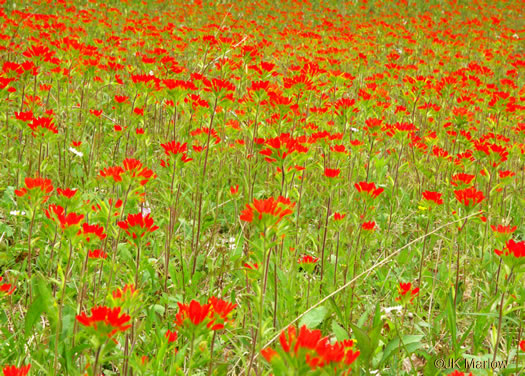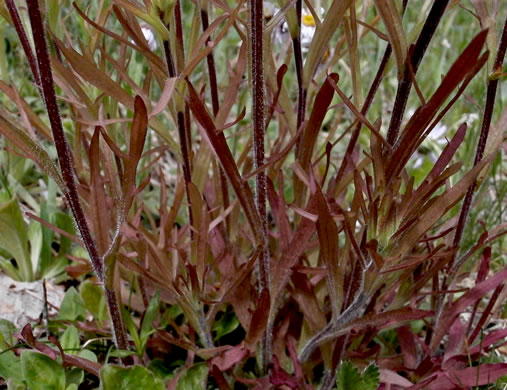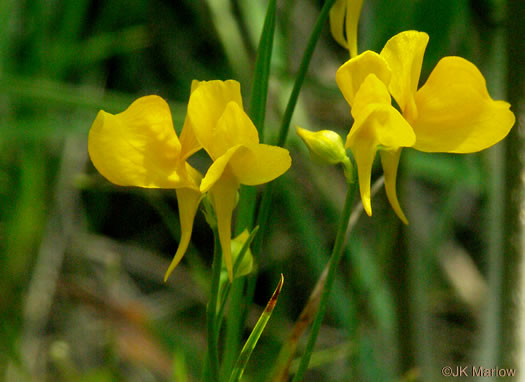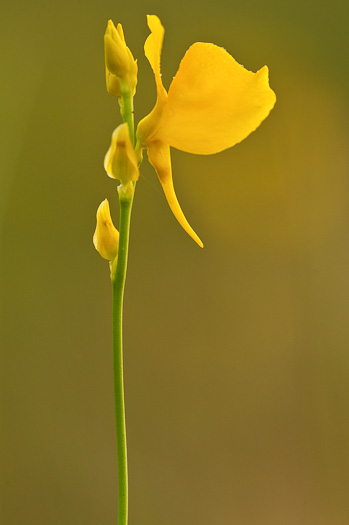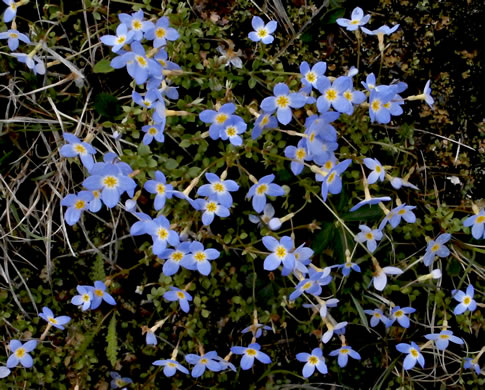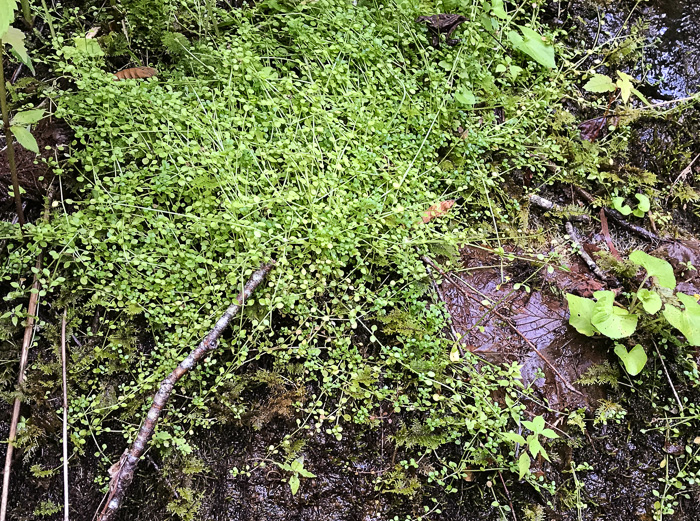South Carolina's Natural Wildflower Communities —
THE MOUNTAINS:
The seepage communities
Cataract bogs
Cataract bogs are one of the most distinctive and aesthetically pleasing wildflower communities. They are somewhat boggy and share many of the species typical of bogs in the mountains and upper piedmont. The best examples of this community are along the margins of small streams that course over rather smooth rock surfaces (granitic dome). Since the water is sliding rather than falling vertically as in a typical waterfall, the term cataract is somewhat inaccurate. The community is primarily fed by seepage, although the stream margins sometimes are a significant water source. The community varies in elevation from about 1200 to 2400 feet and occurs on middle, upper, and occasionally lower slopes. Bog habitats are best developed where streams slide over a margin of rock outcrops that have a nearly level horizontal component and a slope of 5 to 20 degrees. These habitats are in many ways an ideal bog habitat because (1) light is abundant due to the adjacent rock outcrop, (2) moisture is abundant from seepage, and (3) plant succession is slowed because the bog is on shallow soil that overlays rock.
Cataract bogs form a narrow zone immediately adjacent to the associated stream and are shaded in part by trees and shrubs in the adjacent plant communities. Sometimes “bog” trees such as red maple (Acer rubrum) are present. Shrubs include
tag alder (Alnus serrulata),
red chokeberry (Aronia arbutifolia),
yellowroot (Xanthorhiza simplicissima),
mountain laurel (Kalmia latifolia),
great laurel (Rhododendron maximum),
and smooth azalea (R. arborescens).
Herbs tend to be more abundant than grasses and sedges. The distinctiveness of this community is derived from the presence of unusual herbs. Carnivorous plants are sometimes present in abundance, including
mountain sweet pitcherplant (Sarracenia jonesii),
frog's breeches (Sarracenia purpurea var. venosa),
a hybrid of S. purpurea and S. jonesii,
horned bladderwort (Utricularia cornuta),
and round-leaf sundew (Drosera rotundifolia).
Other rare or unusual species include
white fringeless orchid (Platanthera integrilabia)
and limeseep grass-of-Parnassus (Parnassia grandifolia)
and in drier margins, mountain witch-alder (Fothergilla major)
and Indian paint brush (Castilleja coccinea).
The presence of Parnassia suggests a high calcium or magnesium content for at least some of the rocks in these areas. Additional orchids that occur in this community include
small green wood-orchid (Platanthera clavellata),
yellow-fringed orchid (P. ciliaris),
rose pogonia (Pogonia ophioglossoides),
fragrant ladies'-tresses (Spiranthes cernua),
and common grass-pink (Calopogon tuberosus).
Other species of interest include
stiff cowbane (Oxypolis rigidior),
Appalachian bluet (Houstonia serpyllifolia),
several species of lobelia,
and northern sundrops (Oenothera tetragona).
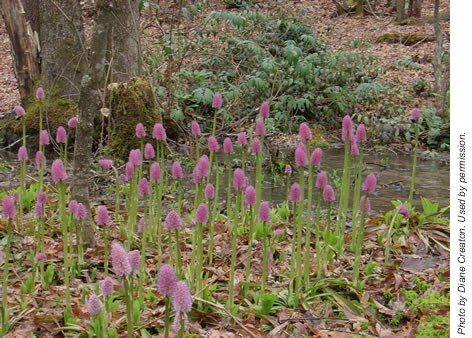
Montane bogs
Montane bogs, sometimes called sphagnum bogs, upland bogs, or Southern Appalachian bogs, are distinguished from other wetland or bottomland forests in the mountains by the presence of sphagnum-dominated openings. These open areas are depressions or seepage channels in streamside flats. In addition to being dominated by a variety of species of sphagnum mosses, they have poor drainage, acid pH, and many grasses, sedges, ferns, and broadleaf herbs; The best examples of this community have boggy openings of more than one acre, but the only good example in South Carolina has long linear openings along seepage channels.
The canopy of the forested portions of this community may be sparse or heavy, and the shrub layer, as the term “forested thicket” suggests, is dense and difficult to traverse; Bamboo-vine (Smilax laurifolia) is often abundant at the margins of the openings and in the adjacent shrub thickets, making movement difficult anywhere but in the openings.
Since there is only one montane bog in South Carolina, Mathews Creek Bog, refer to the description of this bog [in A Guide to the Wildflowers of South Carolina] for an account of species that dominate the herb, shrub, and tree strata. Montane bogs are rare and harbor rare species. The most spectacular of the rarities are swamp pink (Helonias bullata) and bog rose orchid (Arethusa bulbosa).
Bogs are rare in the mountains because of the scarcity of flat, wet sites and because they are successional plant communities that require some sort of disturbance to maintain the early successional status of the boggy openings. In the absence of disturbance, such as periodic fire, the boggy openings become filled in by shrubs and trees, and bog plants disappear.
Mathews Creek Bog was once a good example of a montane bog, but natural succession has degraded the site since 1979. The invasion of shrubs, mostly great laurel (Rhododendron maximum), has reduced the sphagnum-dominated areas by more than one-half. The population of swamp pink has declined and two rare orchids, Appalachian twayblade (Listera smallii) and bog rose orchid, have disappeared. Shrub diversity also appears to have declined, while species such as male-berry (Lyonia ligustrina) and clammy azalea (Rhododendron viscosum) seem to have increased. The herb layer also has decreased in diversity, while American climbing fern (Lygodium palmatum), northern long sedge (Carex folliculata), and galax (Galax urceolata) appear to have increased. Although the absence of fire is the likely culprit, the exact cause of this rapid natural succession is unknown. If appropriate active management is not initiated soon, this site may not be recoverable.
South Carolina's Natural Wildflower Communities is adapted from A Guide to the Wildflowers of South Carolina by Richard D. Porcher and Douglas A. Rayner. Used by permission.
To see pictures or additional information about a particular plant, click its name or its picture.

